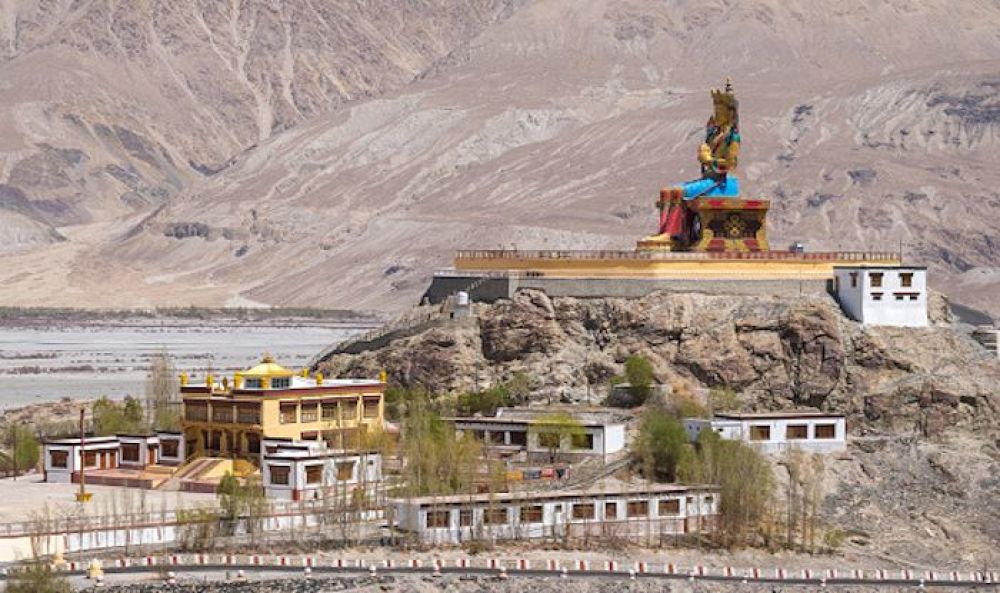

The Diskit Monastery, also known as Deskit Gompa, holds a special place in the hearts of the followers of Tibetan Buddhism. This monastery is the oldest and largest Buddhist monastery in the Nubra Valley of Ladakh, India. Founded by Changzem Tserab Zangpo in the 14th century, the monastery belongs to the Gelugpa sect (also known as the Yellow Hat sect) of Tibetan Buddhism. It has been a hub of spiritual learning and a beacon of peace for hundreds of years, attracting monks and spiritual seekers to its tranquil confines.
The sublime architecture of Diskit Monastery captures the essence of Tibetan style. Perched on a hill at an altitude of 3,144 meters (10,315 ft), it offers panoramic views of the Nubra Valley. A key attraction within the monastery is the massive statue of Maitreya Buddha, which stands tall at 32 meters (106 ft). This statue symbolizes peace, protection from war, and the spread of Buddhism across the Himalayas. The monastery also houses a rich collection of artifacts, thangkas, and frescoes that exhibit the artistry and religious devotion of ancient times.
Tourism in Ladakh has gradually developed over the decades, especially after Ladakh was opened to foreign tourists in 1974. Initially, the harsh terrain and the challenges of high-altitude travel deterred all but the most adventurous. Nevertheless, over the years, the unscathed beauty of Ladakh has lured an increasing number of visitors. Diskit Monastery, with its scenic location and spiritual aura, quickly became a focal point for tourists traveling to the Nubra Valley.
In recent years, eco-friendly and sustainable tourism practices have gained momentum in Ladakh. There is a growing emphasis on preserving the natural and cultural heritage of the region. Visitors are encouraged to respect local customs and minimize their environmental impact. Additionally, adventure tourism has soared in popularity, integrating cultural visits with activities like trekking, camel safaris, and motorbiking. The annual Dosmoche Festival, also known as the 'Festival of the Scapegoat', is hosted by the Diskit Monastery and has become an integral part of the area's tourism offerings, showcasing colorful Cham dances and rituals.
To visit Diskit Monastery, tourists need to acquire the Inner Line Permit (ILP), as Nubra Valley lies close to the border areas. The best time to visit is from June to September when the roads are clear of snow. To ensure a positive impact on the local community, tourists are urged to engage with local guides and use homestays where possible, as this helps in the economic development of the region.
With its rich history, stunning geography, and vibrant culture, Diskit Monastery remains a jewel in the crown of Ladakh's tourism attractions, offering a serene escape to spirituality and nature enthusiasts alike.